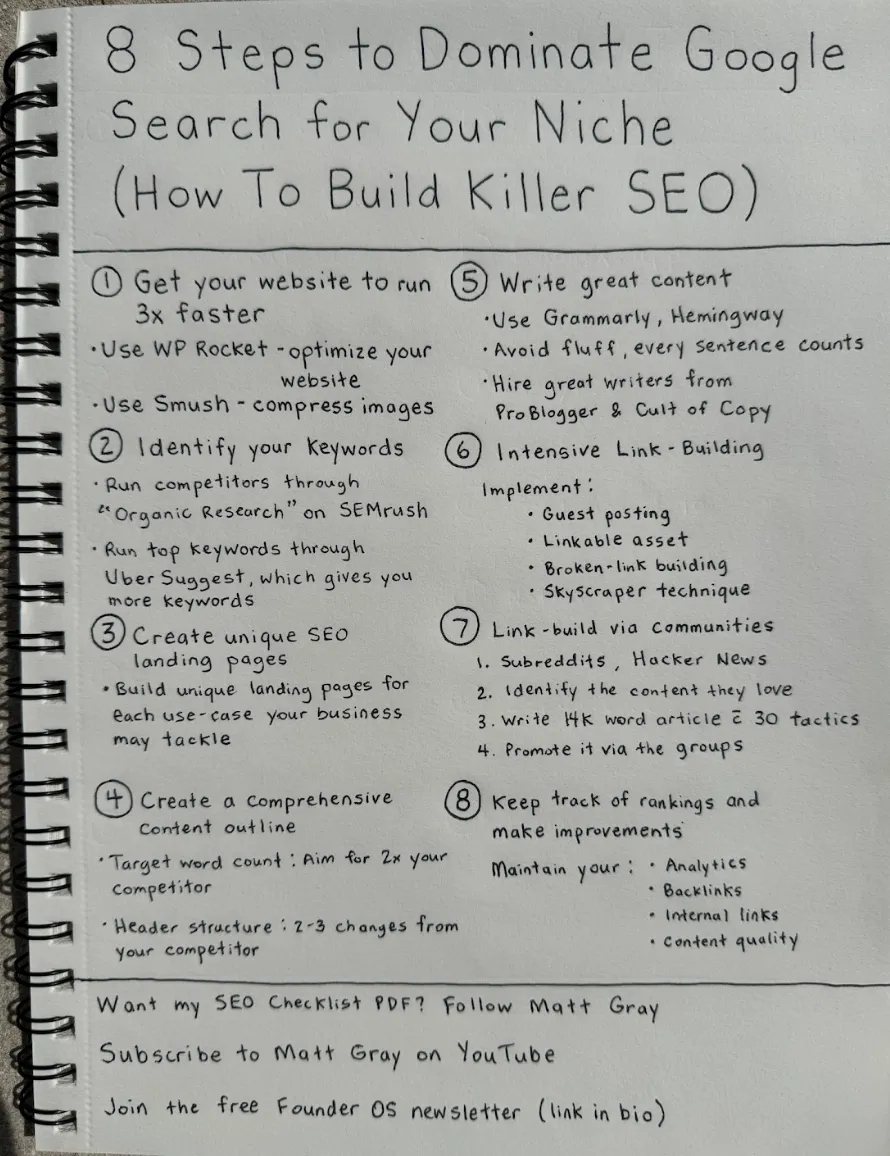How To Start Your Lead Generation Business
Starting any business can be a bit overwhelming. But if you break it down step-by-step, it becomes much easier. Let’s dive into the key things you’ll want to do to get your lead generation company going.


Finding potential customers — those are called leads. And finding them can be one of the hardest things about running a business. Many companies just don’t have the time or the right tools to find the perfect leads for their business.
But leads are super important. They are the lifeblood of any growing business. Without a steady stream of leads, finding new customers, making sales, and making money is hard.
Fortunately, there’s a solution. If you have the skills and the drive to succeed, you can start your own lead-generation business. You get to help other business owners thrive by finding those perfect leads for them. It’s a win-win.
Starting any business can be a bit overwhelming. But if you break it down step-by-step, it becomes much easier. Let’s dive into the key things you’ll want to do to get your lead generation company going.

Think of your niche as your specialty area. It’s who you’ll be helping and what kinds of leads you’ll be finding.
Choosing the right niche is key. If you go too broad, you’ll be competing with tons of other companies. Instead, you want to find a sweet spot — a niche where there’s a real need for your services.
Here are the big things to think about when choosing your niche:
Now, let’s look at some examples of niches in lead generation:
That’s just a tiny sampling of what’s possible for you and your sales team. The more specific you can get with your niche, the better.
Figuring out what to charge for your lead generation services is one of the trickiest parts of starting a business. Here’s the good news — there are a few different ways to do it.
Let’s look at the most common options:
Let’s focus on the hybrid model, as it’s a great option for a new lead generation business. Here’s how it works in more detail:
Always, always make sure there’s enough profit built into your pricing. Otherwise, your lead generation business won’t last long.
Not all leads are created equal. And the best clients will be the ones who truly need you. To find them, start by creating an ideal customer profile (ICP). Your ICP is like a sketch of your perfect target audience.
Here’s how you build one:
Moreover, knowing your ICP inside and out helps in two ways.
For one, you’ll know exactly who to target with your lead generation strategies and even your marketing messages.
And two, you can offer solutions that directly address your clients’ pain points. That makes for happy clients who keep coming back for more leads.
Finding leads is the heart of your new business. And get this — there isn’t one single “best” way to do it. Great lead-generation businesses use a mix of methods to get results.
LinkedIn is a goldmine for finding potential clients, especially if you’re targeting businesses (that’s called B2B lead generation). But sorting through all those profiles can take forever. That’s why specialized software tools are a game-changer for lead-generation campaigns.
These tools make it easy to find leads and reach out to them quickly. Here’s how to scrape LinkedIn posts for leads:
Now, you’ve got a list of potential leads. Automation tools often let you automatically send personalized connection requests and messages. This saves you tons of time compared to doing it all manually on LinkedIn.
It’s not just about the tools — how you reach out to leads matters a lot. Remember, lead generation is about building relationships with potential clients.
Here are a few proven outreach methods:

It’s important to have a mix of outbound (actively reaching out) and inbound (leads coming to you) marketing strategies.
Here’s where those marketing skills come in:
These are just a few of the powerful strategies you can use to fill your lead generation business with exciting possibilities. A mix of smart outreach, targeted marketing, and the right lead generation tool will set you on the path to attracting tons of perfect-fit clients for your business.
Running a small business is much more than finding leads. You need to make sure all your hard work is paying off. That’s where tracking your results becomes super important.
Most successful lead-generation businesses aren’t lucky. They carefully watch specific numbers called metrics to ensure everything works as it should.
Some of the most important things to track are:
Think of it like this: metrics are like a report card for your lead gen business. They show you what you’re doing well and where you might need to change things up.
Here are a couple of other key metrics to pay attention to:
All this data might seem a bit overwhelming at first. But here’s the good news: understanding your metrics helps you make smarter decisions.
For example, if website traffic is low, it’s time to double down on your SEO and content marketing. If cold calls have a high conversion rate, maybe focus on hiring more people to do the outreach.
Every improvement you make based on data should lead to finding better leads and more happy clients. In the end, this means more money for your business.
There are plenty of tools and software that help track all this stuff. But even a simple spreadsheet can work when you’re starting your business.
Embed: https://twitter.com/matt_gray_/status/1762830233030263219

Remember, building a successful business takes more than just lead generation (though it’s definitely important). That’s where Founder OS comes in. We’re a powerful resource for entrepreneurs, designed to help you succeed at every stage.
Here’s what we offer:
Starting your own lead generation business is an incredible journey. Founder OS is here to support you every step of the way. Take action today and see the difference it makes.

The proof is in the pudding. Matt's approach has helped grow Herb into a major media company with a massive community, and his personal brand continues to grow impressively.
Investor | Entrepreneur | Creator

Matt’s advice is super on point because it’s practical. He’s gone through and done everything that he preaches. If you don’t want to spend hours digging up frameworks on content, growth, marketing, and general startup advice - talk to Matt, read his newsletter, or sign up for his course.
Founder, Zarta

Matt is an absolute beast when it comes to audience and community growth. He goes above and beyond to help founders - you can tell he genuinely cares. Would highly recommend working with him.
Founder, Figure, Archer, Vettery
